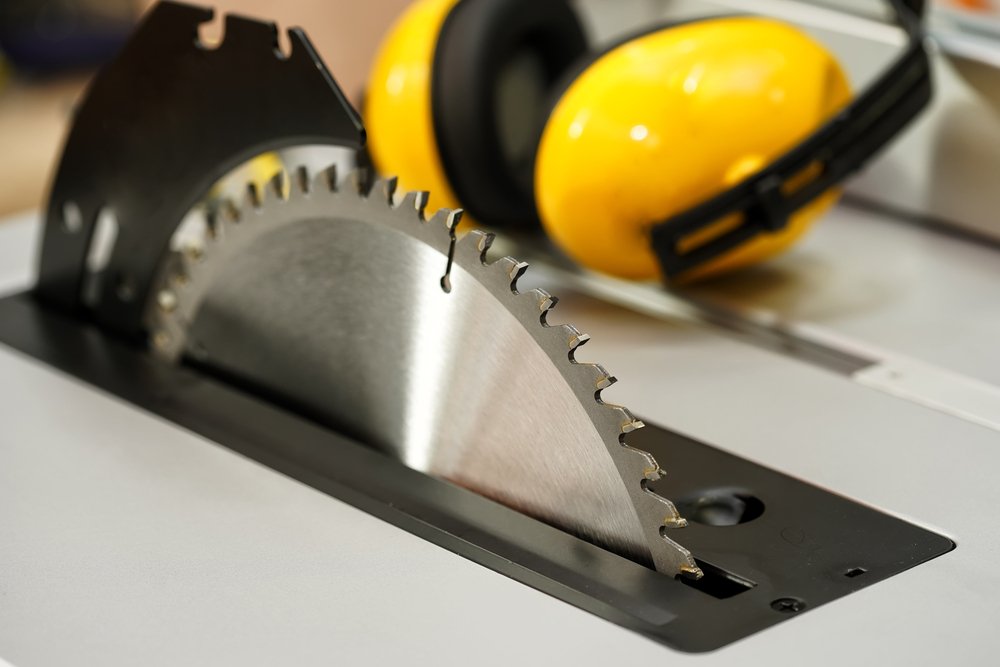A band saw is a power tool that is used for cutting wood, metal, and other materials. It consists of a continuous loop of saw blade that is mounted on two wheels and powered by an electric motor. The saw blade moves in a vertical or horizontal direction, depending on the type of band saw, and is guided by a table or guide system.
Band saws are versatile tools that are commonly used in woodworking, metalworking, and other industries. They can be used to make precise cuts, curve cuts, and rip cuts, and are particularly useful for cutting irregularly shaped materials or materials with intricate patterns.
Contents
Types of Band Saws
There are several types of band saws available, each designed for specific applications and materials.
- Horizontal band saws: These band saws have a horizontal blade and a horizontal work table. They are typically used for cutting larger pieces of material, such as logs or beams, and are often used in sawmills and lumber yards.
- Vertical band saws: These band saws have a vertical blade and a vertical work table. They are smaller and more portable than horizontal band saws, and are commonly used in woodworking and metalworking shops.
- Portable band saws: These band saws are small, lightweight, and portable, making them ideal for use on construction sites and in tight spaces. They are available in both horizontal and vertical configurations.
Choosing the Right Band Saw
When choosing a band saw, there are several factors to consider:
- Size: The size of the band saw should be appropriate for the size and type of materials you will be cutting. Larger band saws are better suited for cutting larger pieces of material, while smaller band saws are better for precise cuts in smaller materials.
- Blade width: The width of the saw blade will determine the thickness of the material you can cut. Choose a wider blade for thicker materials, and a narrower blade for thinner materials.
- Power: The power of the band saw’s motor will affect its speed and cutting ability. Consider the types of materials and cuts you will be making when choosing a band saw with the appropriate power.
- Guide system: The guide system helps to keep the saw blade on track and prevent it from drifting or binding. Look for a band saw with a durable and precise guide system.
- Features: Some band saws come with additional features, such as adjustable blade guides, variable speed control, and dust collection systems. Consider which features will be most useful for your needs.
Using a Band Saw
Before using a band saw, it’s important to set it up and prepare it properly:
- Install the saw blade according to the manufacturer’s instructions.
- Adjust the blade guides to the proper distance from the blade.
- Check the saw blade tension and make sure it is properly tightened.
- Inspect the work area and remove any clutter or obstacles that might interfere with the saw.
- Wear appropriate safety gear, such as safety glasses, earplugs, and gloves.
When using a band saw, follow these techniques for making precise cuts:
- Use a straightedge or square to mark your cut lines.
- Use a slow, steady feed rate to avoid binding or overheating the saw blade.
- Keep your hands away from the saw blade at all times.
- Use a push stick or jig to guide the material through the saw if necessary.
Table Saw
A table saw is a power tool that is used for cutting wood and other materials. It consists of a circular saw blade mounted on an arbor that is driven by an electric motor. The saw blade is raised and lowered through a slot in the table, and the material to be cut is placed on the table and pushed through the blade.
Table saws are versatile tools that are commonly used in woodworking, carpentry, and other industries. They can be used to make precise cuts, rip cuts, crosscuts, and miter cuts, and are particularly useful for cutting long pieces of material or making multiple identical cuts.
Types of Table Saws
There are several types of table saws available, each designed for specific applications and materials.
- Benchtop table saws: These table saws are small and portable, making them ideal for use in a workshop or on a job site. They are typically less powerful than other types of table saws, and are best suited for making cuts in smaller materials.
- Contractor table saws: These table saws are larger and more powerful than benchtop saws, and are typically mounted on a stand or cart. They are suitable for a wider range of materials and applications, and are commonly used in woodworking shops.
- Cabinet table saws: These table saws are the largest and most powerful type of table saw. They are mounted on a cabinet-style base and are designed for heavy-duty use in a professional setting. Cabinet table saws are capable of making precise cuts in a wide range of materials, and are often used in industrial environments.
Choosing the Right Table Saw
When choosing a table saw, there are several factors to consider:
- Size: The size of the table saw should be appropriate for the size and type of materials you will be cutting. Larger table saws are better suited for cutting larger pieces of material, while smaller table saws are better for precise cuts in smaller materials.
- Blade size: The size of the saw blade will determine the thickness of the material you can cut. Choose a larger blade for thicker materials, and a smaller blade for thinner materials.
- Power: The power
Table Saw Vs Band Saw
Table saws and band saws are both powerful tools that are commonly used in woodworking and other industries. While they have some similarities, there are also significant differences between these two types of saws that make them better suited for certain applications.
- A table saw consists of a circular saw blade mounted on an arbor and driven by an electric motor. The saw blade is raised and lowered through a slot in the table, and the material to be cut is placed on the table and pushed through the blade.
- Table saws are versatile tools that can be used to make a wide range of cuts, including rip cuts, crosscuts, and miter cuts.
- Table saws are generally more powerful than band saws, and are capable of cutting thicker and harder materials.
- Table saws are typically larger and more expensive than band saws, and are best suited for use in a workshop or professional setting.
Band Saw
- A band saw consists of a continuous loop of saw blade that is mounted on two wheels and powered by an electric motor. The saw blade moves in a vertical or horizontal direction, depending on the type of band saw, and is guided by a table or guide system.
- Band saws are primarily used for making curved cuts and irregular shapes, and are particularly useful for cutting materials with intricate patterns.
- Band saws are generally less powerful than table saws, and are best suited for cutting softer and thinner materials.
- Band saws are available in a variety of sizes and are generally more portable than table saws. They are suitable for use in a workshop or on a job site.
Overall, table saws are better suited for making precise straight cuts in thicker and harder materials, while band saws are better for making curved cuts and irregular shapes in softer and thinner materials. Both tools have their own unique capabilities and are valuable additions to any woodworking shop.
Final Note
Table saws and band saws are both useful tools for cutting wood and other materials. However, they have different capabilities and are best suited for different types of cuts and materials. Table saws are powerful tools that are ideal for making precise straight cuts in thicker and harder materials, while band saws are better suited for making curved cuts and irregular shapes in softer and thinner materials.
Both tools have their own unique advantages, and the right choice for your needs will depend on the specific projects and materials you are working with.

